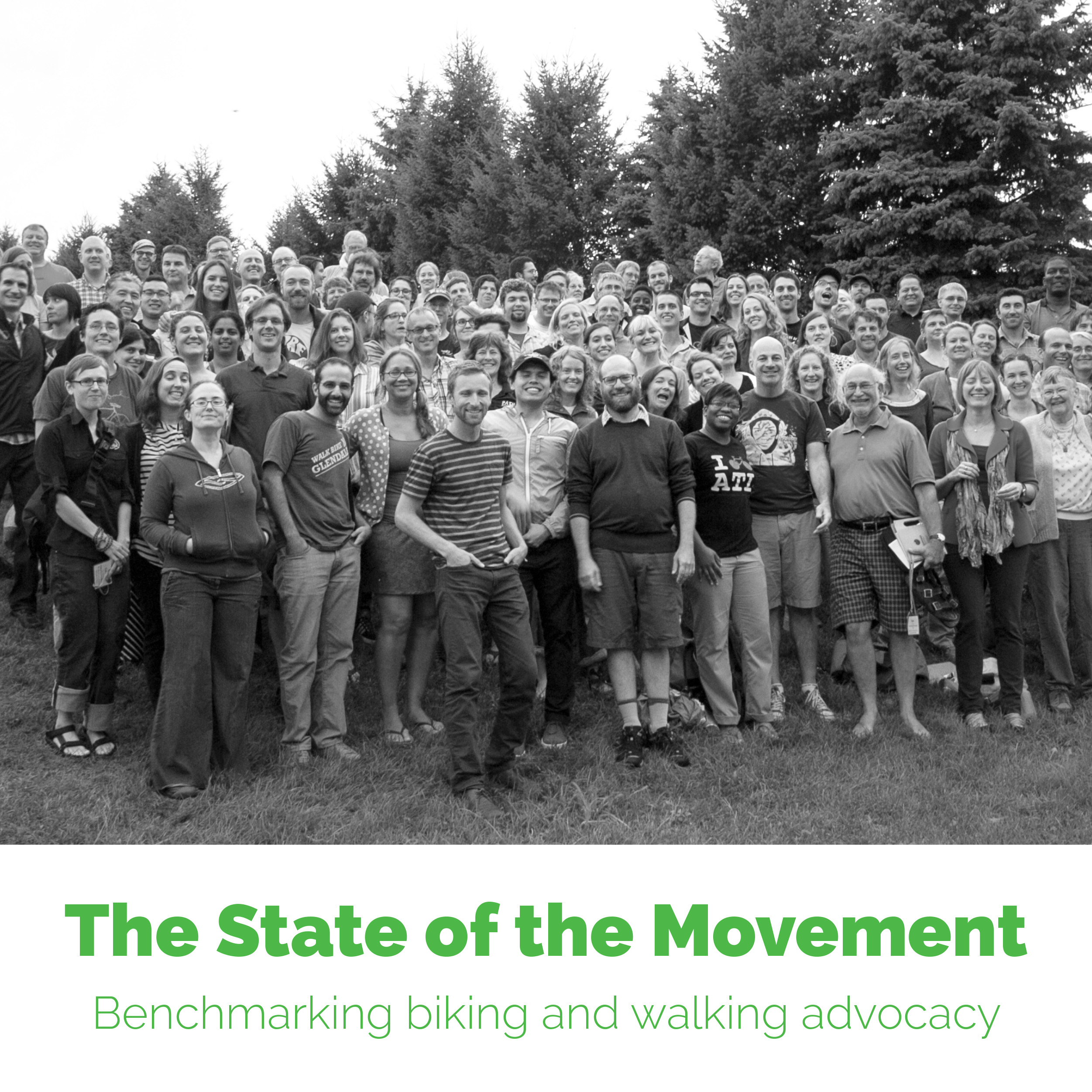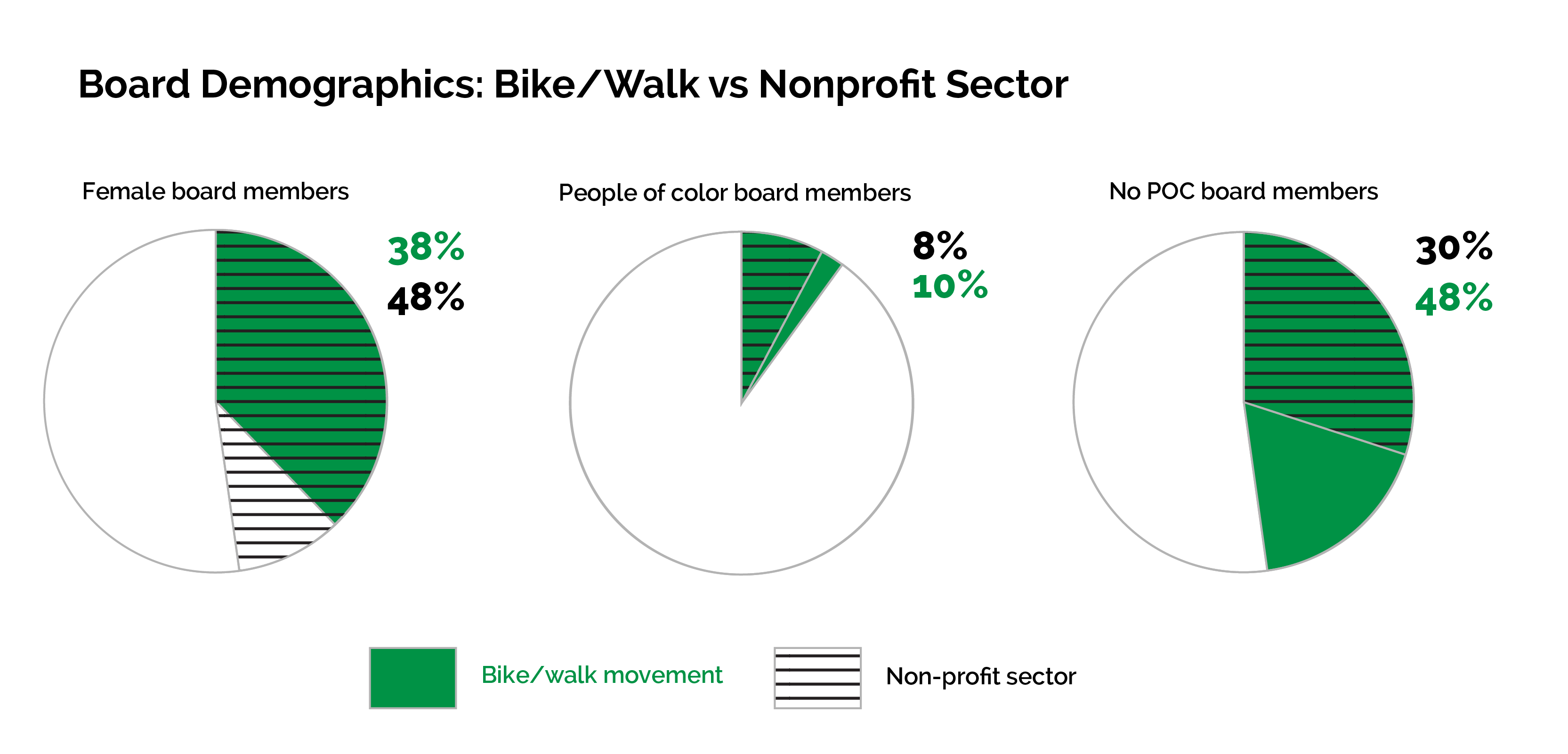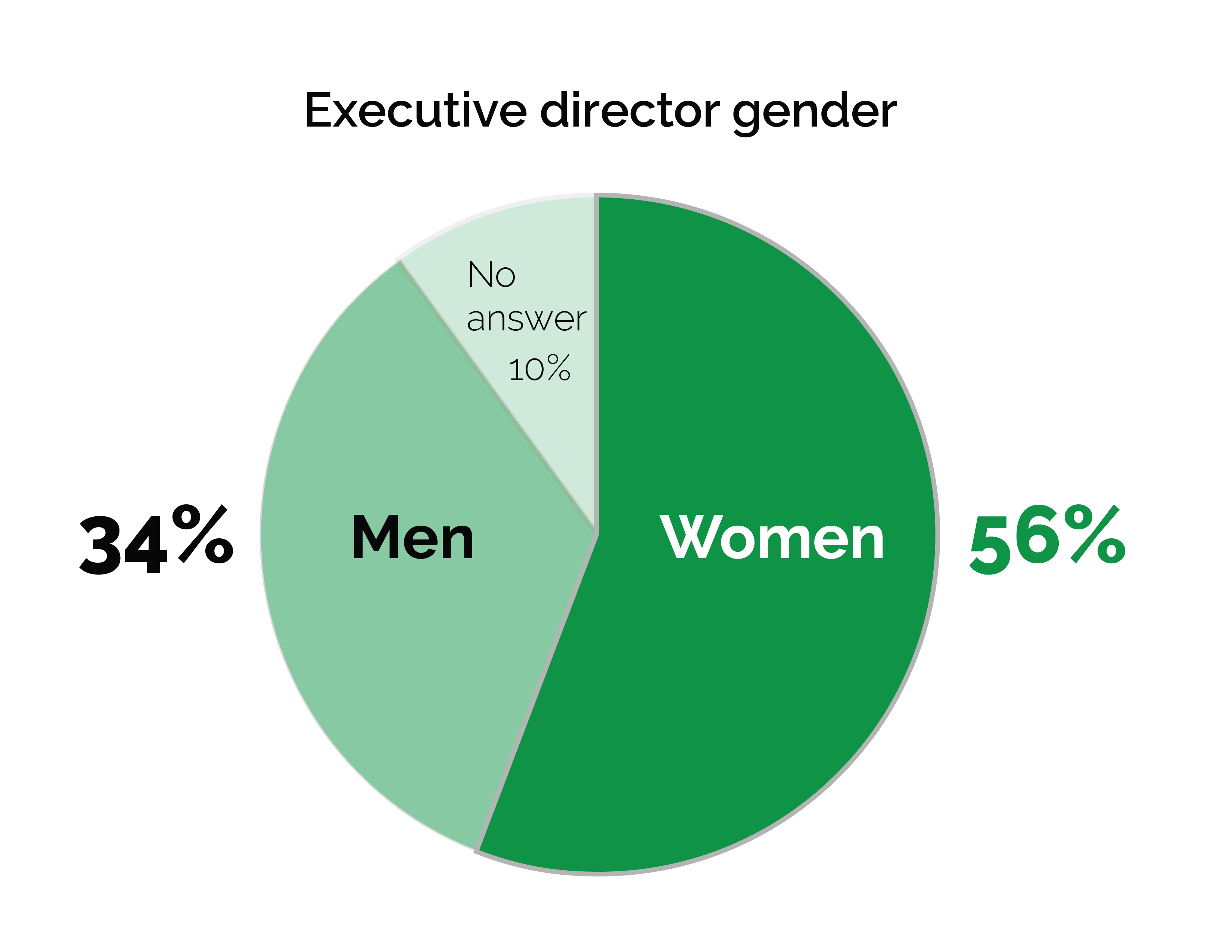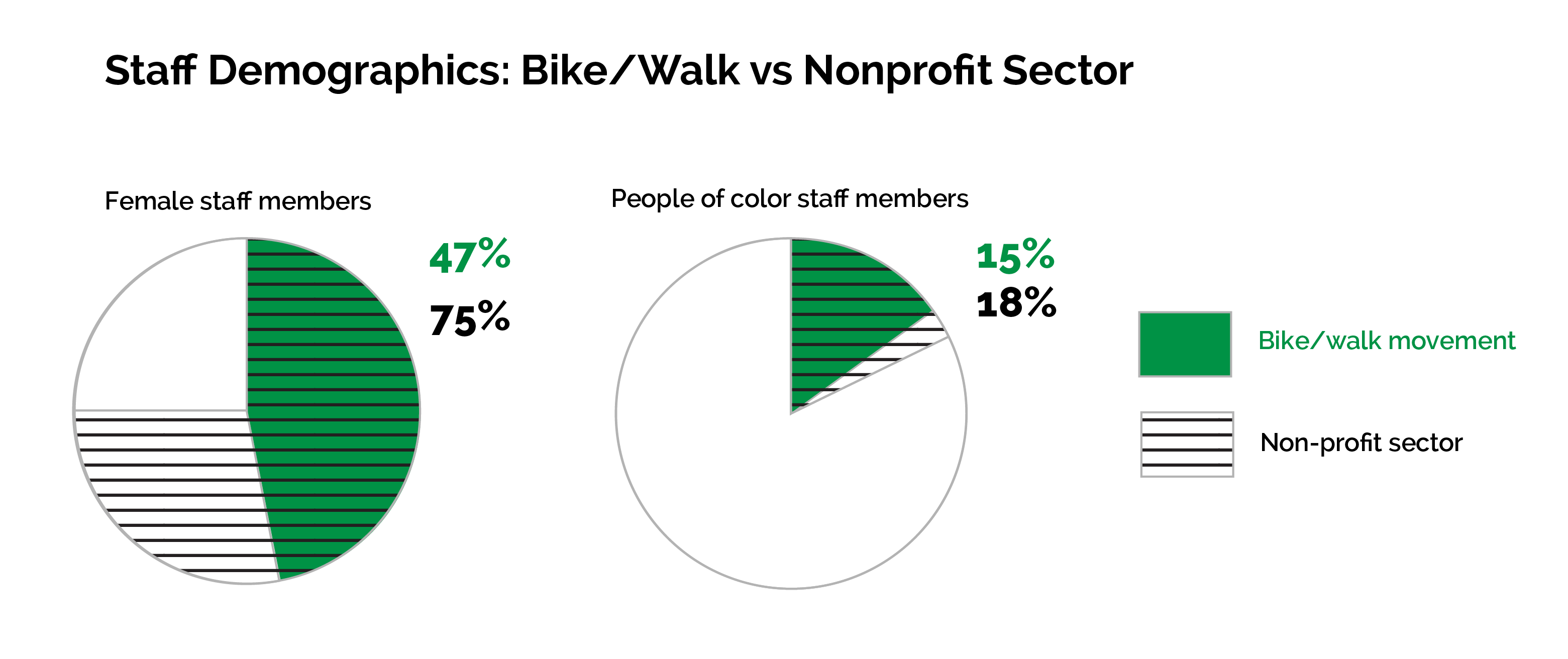
Last year, the ground-breaking Green 2.0 report found that the racial composition of mainstream environmental organizations lags far behind the demographic diversity of the nation. It was in part because of this eye-opening survey that the Alliance embarked on its State of the Movement project — and we found the same trend of white-dominant organizations and leadership in the bike/walk movement, as well.
According to 2010 data from the U.S. Census Bureau, 50.8% of the U.S. population is female and 36.3% of Americans identify with a race other than White. And Latinos, Asians and African Americans are expected to grow from more than a third of the population to a little more than half of the people living in the United States by 2045.
Not surprisingly, our survey of Alliance member organizations found that, currently, the leadership of the bike/walk movement is not representative of the nation at large with fewer women and people of color in board and staff positions than the general population. This is not to say that organizations aren't working in diverse communities or that simply having a diverse staff will inevitably and directly lead to equity in outcomes for the wider community. But cultivating diverse leadership and truly integrating the perspectives of different lived experiences is an essential step toward inclusive organizations — and ultimately equity in the movement.
Here's what we found...
Board
To benchmark the bike/walk movement against the larger nonprofit sector, our survey asked the size and demographic composition of the organization’s Board of Directors. According to our survey, women represented 38% of Alliance member organizations’ boards — notably lower than the nonprofit sector as a whole, where 48% of board members are women.
People of color composed 10% of Alliance board members — higher than the nonprofit industry as a whole, where 8% of board members are people of color. However, this representation may be concentrated among relatively few organizations, as 48% of survey respondents reported no people of color on their board, compared to 30% of nonprofits in general.

Executive Director
 Statistics regarding executive directors were more difficult to determine based on partial responses to our survey. While 14% of member executive directors identified as people of color, 19% did not identify with any particular race or ethnicity. In looking at the gender breakdown, 34% are men, 56% are women, and 10% did not identify a gender. White males and white females were almost equally represented as the most common cohorts, however a third of female executive directors did not identify a racial identity.
Statistics regarding executive directors were more difficult to determine based on partial responses to our survey. While 14% of member executive directors identified as people of color, 19% did not identify with any particular race or ethnicity. In looking at the gender breakdown, 34% are men, 56% are women, and 10% did not identify a gender. White males and white females were almost equally represented as the most common cohorts, however a third of female executive directors did not identify a racial identity.
Staff
Of the more than 1,000 people working for Alliance member organizations, 47% are women. Looking more closely at the distribution of female staffers, 32% of member organizations are staffed by mostly women (70-100% of staff), while 36% of organizations have no women on staff. According to a 2013 University of Denver study, 75% of staff at nonprofit organizations in 2009 were women.

We also looked at not just overall representation of women in leadership positions, but also the relation of these groups to organization size. Based on our sample of responses, large staffed organizations are more likely to be lead by men; women are more likely to lead smaller organizations. Specifically, organizations with white male executive directors average eight full time employees, while those with white female leaders average four.
People of color represent 15% of Alliance member organizations’ staff, compared to 18% across the non-profit sector as a whole. Meanwhile 65% of responding member organizations have no people of color on staff. This is a challenge that isn’t unique to the bike/walk movement: According to Nonprofit HR Solution’s 2013 report, only 32% of nonprofits feel that their staff reflects the composition of communities they serve.

